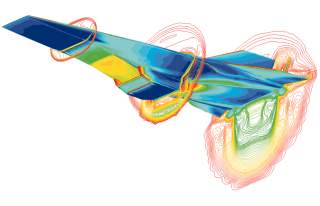Can the Pentagon Find a Way to Stop Chinese and Russian Hypersonic Missiles?
A grave danger?
Key point: Hypersonic missiles will be faster than anything yet invented and will be very hard to intercept. This is why all the major powers are racing to build them.
The Pentagon is fast-tracking sensor and command and control technology development to improve defenses against fast-emerging energy hypersonic weapons threats from major rivals such as Russia or China, US Missile Defense Agency officials said.
Citing particular emphasis upon the area of Command and Control, Battle Management and Communications (C2BMC), Missile Defense Agency Director of Operations Gary Pennett said the Pentagon is working to address “sensor and interceptor capability gaps” exposing potential vulnerability to hypersonic weapons attacks.
“Any software associated with any of those systems might have some capability to track hypersonic systems. This evolving threat demands a globally present and persistent space sensor network to track it from birth to death,” Pennett told reporters during an MDA budget briefing.
While not specifically cited by Pennett, many at the Pentagon are doubtless aware of news reports citing Chinese hypersonic weapons development, to include details of various tests in some instances.
Recommended: America Has Military Options for North Korea (but They're All Bad)
Recommended: 1,700 Planes Ready for War: Everything You Need To Know About China's Air Force
Recommended: Stealth vs. North Korea’s Air Defenses: Who Wins?
The MDA and Northrop Grumman are already working on command and control upgrades to the existing inventory of Ground Based Interceptors with a specific focus on using next-gen sensors to exchange time-sensitive data with a kill vehicle targeting an enemy attack in space.
While a Ground-Based Interceptor (GBI) travels into space to discern and destroy an ICBM, sensors and communications technology are needed to connect with the interceptor prior to engagement.
While many of the details, sensors or RF technologies involved are, not surprisingly, unavailable for public discussion, there are a number of substantial cutting-edge improvements emerging quickly, Northrop developers told Warrior Maven.
The specifics of US-Chinese hypersonic weapons technical competition are, quite expectedly, not likely to be available, however many US military leaders have consistently raised concerns about China’s focus upon the technology. The speed and impact of a hypersonic attack, naturally, places an as-of-yet unprecedented burden upon layered defense systems and sensors engineered to cue countermeasures.
A weapon traveling at hypersonic speeds, naturally, would better enable offensive missile strikes to destroy targets such and enemy ships, buildings, air defenses and even drones and fixed-wing or rotary aircraft depending upon the guidance technology available, Air Force experts have explained.
A key component of this is the fact that weapons traveling at hypersonic speeds would present serious complications for targets hoping to defend against them – they would have only seconds with which to respond or defend against an approaching or incoming attack.
Hypersonic weapons will quite likely be engineered as “kinetic energy” strike weapons, meaning they will not use explosives but rather rely upon sheer speed and the force of impact to destroy targets, a senior weapons developer told Warrior Maven.
For this and other reasons, the US has been fast-tracking development of its own hypersonic weapons; the US has conducted various hypersonic weapons developmental experiments with Australia in recent months.
Air Force weapons developers say the service will likely have some initial hypersonic weapons ready by sometime in the 2020s. A bit further away in the 2030s, the service could have a hypersonic drone or ISR (intelligence, surveillance, reconnaissance) vehicle, former senior Air Force weapons developers have told Warrior Maven over the course of several previous interviews.
A super high-speed drone or ISR platform would better enable air vehicles to rapidly enter and exit enemy territory and send back relevant imagery without being detected by enemy radar or shot down.
By the 2040s, however, the Air Force could very well have a hypersonic “strike” ISR platform able to both conduct surveillance and delivery weapons, Air Force weapons developers have told Warrior.
MDA 2019 Budget - Increasing Ground-Based Midcourse Defense
The pursuit of advanced sensor technology able to detect hypersonic weapons attacks emerged as Pennett’s explanation of the $9.9 billion MDA portion of the President’s defense budget.
Citing serious missile threats from North Korea, Iran and other possible hostile actors, the US Missile Defense Agency is aggressively pursuing a plan to rapidly increase its number of Ground Based Interceptors to 64 by 2023, Pennett said.
US plans to expand homeland missile defenses by adding a new missile field and deploying 20 additional GBIs at Fort Greely, Alaska, he added.
“MDA will ensure the number of fielded GBIs is sustained at 64, while performing GBI upgrades and maintenance by adding two additional silos in Missile Field 1 at Fort Greely and purchasing six additional configuration 2 booster vehicles,” Pennett told reporters.
Specific to North Korea, Pennett cited a fast-growing ICBM threat to the continental United States.
“In July 2017, North Korea launched two Hwasong-14 intercontinental ballistic missiles, or ICBMs, on highly lofted trajectories that impacted in the Sea of Japan,” he said.
Pennett also cited North Korea’s November launch of a Hwasong-15 ICBM, which if fired on a lower trajectory could have reached the continental US.
“North Korea is developing a cold launch, solid fuel, submarine-launched ballistic missile. Today, North Korea fields hundreds of SCUD and No Dong missiles that can reach our allies and U.S. forces forward deployed in the Republic of Korea and Japan,” Pennett said.
Iran may also soon have an ability to produce and launch an ICBM able to reach the US, Pennett said, adding that the country already has ballistic missiles able to hit areas as far away as southeastern Europe.
The budget also emphasizes MDA’s Redesigned Kill Vehicle, Long Range Discrimination Radar and Sea-Based X-Band radar, among other things.
This article by Kris Osborn originally appeared on Warrior Maven.
Image: Wikimedia.

